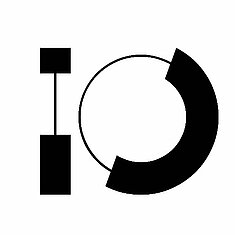500 households are warm thanks to ‘rechargeable’ iron powder

Image: the combustion of iron powder © Bart van Overbeeke
500 households are warm thanks to ‘rechargeable’ iron powder
Heating your home with iron fuel instead of gas, it can be done. Sart-up RIFT and Ennatuurlijk are setting up a test system to supply 500 households with energy from iron powder.
Spin-off RIFT (Renewable Iron Fuel Technology) from the TU Eindhoven wants to use iron fuel on a global scale as a sustainable alternative to fossil fuels as a way to lower CO2 emissions. The pilot project that’s running together with Ennatuurlijk is an important step towards achieving this goal. In the Dutch city of Helmond, the start-up is now working on a proof of concept boiler with a capacity of one megawatt. This can be used – via the Ennatuurlijk heat network – to provide heating to five hundred households.
An infinite system
The system works as follows: iron powder is burned in the boiler. This releases a lot of heat, for example for heat networks. What remains is rust powder. With hydrogen, you can convert that back to iron powder, thus 'charging' the powder again and creating a circular fuel. The start-up is now making a test installation for both components. The first test boiler to burn iron powder will be in Helmond. In Arnhem is the installation that can convert rust powder back into iron powder. This is the first of its kind.
Mark Verhagen, CEO of RIFT, sees iron fuel as an important addition when it comes to sustainability. "Industrial processes and heat networks require large amounts of energy. Sustainable alternatives such as electricity and hydrogen cannot always provide that. Our networks are not designed to supply so much energy to industry on top of current usage in the short term," he states. "So in these sectors, alternatives like iron powder are very important."
No CO2 and less nitrogen
"This process does not release any CO2. In addition, nitrogen emissions during the process are much lower than with coal or gas," Verhagen explains. Iron fuel also has a number of other advantages. For example, it has a high energy density. One cubic meter of iron fuel contains as much energy as eleven cubic meters of high-pressure hydrogen. In addition, it is also safer to store and transport than hydrogen. Finally, it does not lose energy in storage. "That does happen with batteries, for example - they run out of energy over time."
Student team
Start-up RIFT originated from the SOLID student team at Eindhoven University of Technology (TU/e). Since 2015, the team has been working with researchers at the university on the technology behind the iron fuel. The student team tested the technology - as part of the Metal Power Consortium - at the family brewery Swinkels' factory in 2020. Iron fuel then provided the heat needed in the brewing process. Mark Verhagen was SOLID team leader in the 2019/2020 school year. "Then we showed that the technology works. With the current pilot, we can show that it also has commercial potential."
Verhagen emphasizes that student teams are important drivers for new technologies such as iron fuel. "In a student team, the right people come together. People who really believe in a particular innovation and want to put their shoulders to the wheel to actually take it to the next level," he says passionately. "At SOLID, we often got skeptical reactions from people who thought this technology wouldn't work. But it does work!"
Collaborate
Now, as CEO of RIFT, he looks at the people who contribute to innovation very differently again. "We work with a diverse team of fourteen people. The younger people know everything about this new technology and the over-50s have a huge bucket of experience that they are happy to share with others. This is how we ensure the best results together." He also says partners who make the initial pilots possible are invaluable to the company. "They stick their necks out to really bring this new technology to the market. That makes them important frontrunners when it comes to the energy transition."
Scaling up
In two years, RIFT plans to create a five-megawatt iron fuel plant. To this end, a letter of intent has already been signed for a partnership with Veolia Industrial Services. "With the current one-megawatt pilot, we are investigating the main elements of the plant in a commercial environment. Then we can further optimize the system and scale it up to the five-megawatt system."
"I see iron fuel alongside wind turbines, solar panels and hydrogen as an important sustainable alternative to fossil fuels. Our goal is that we can decarbonize heavy industry worldwide with iron fuel."
Mark Verhagen, CEO of RIFT
